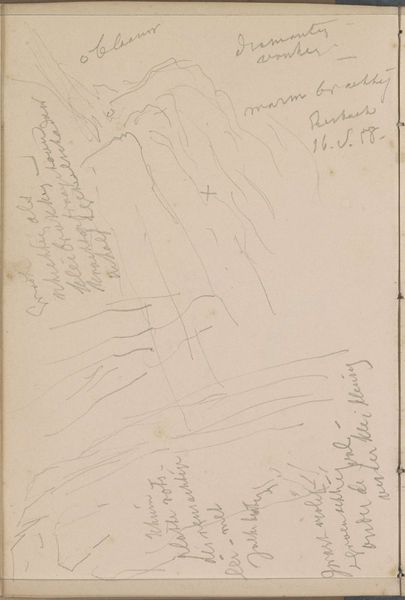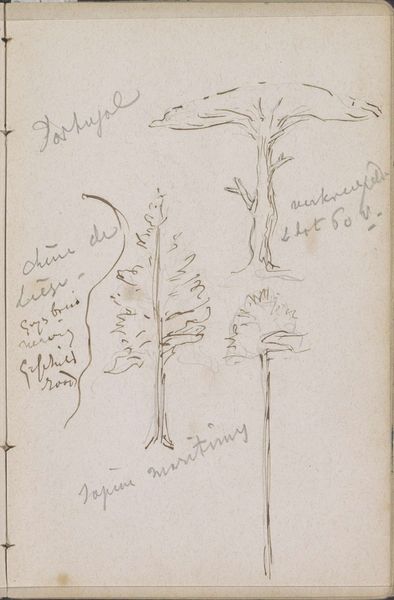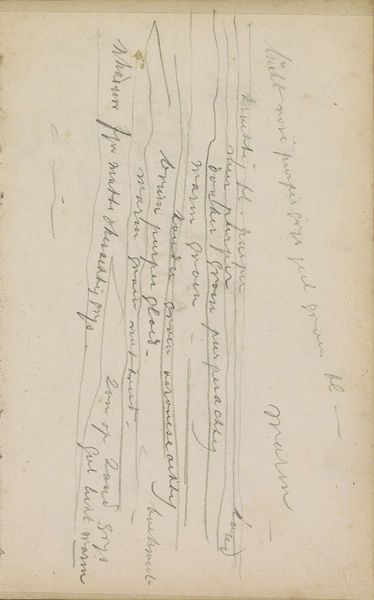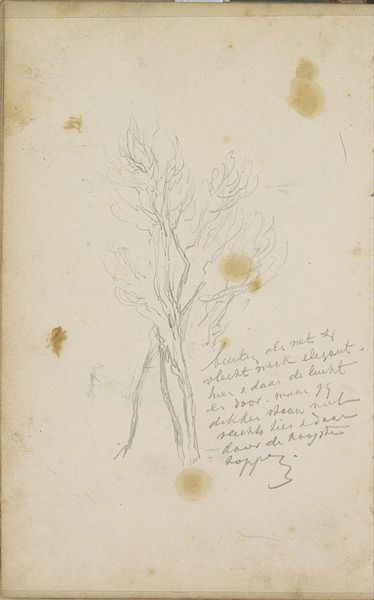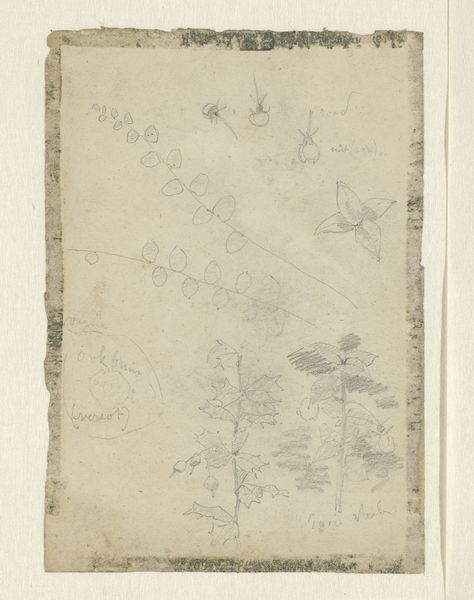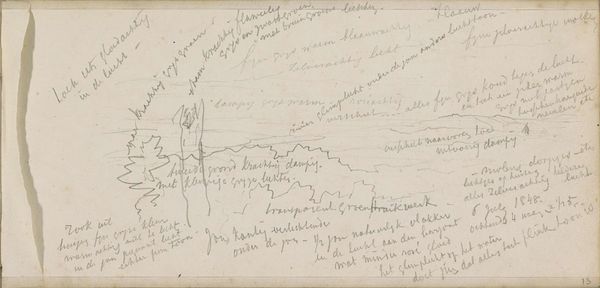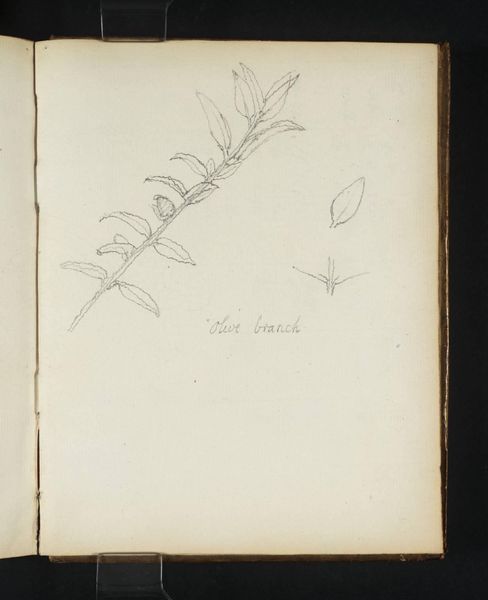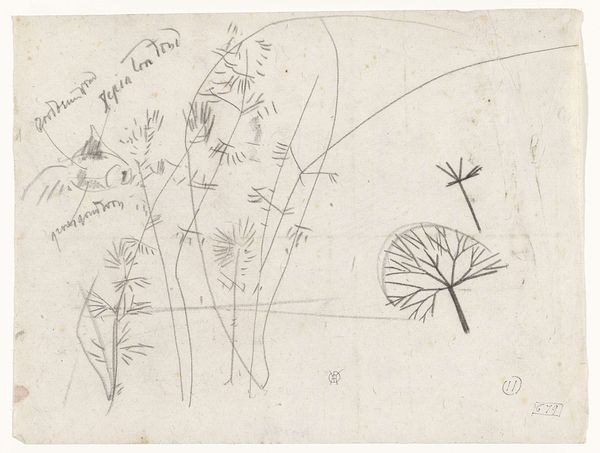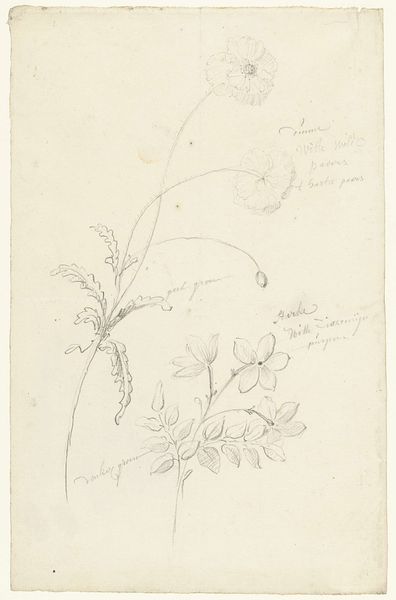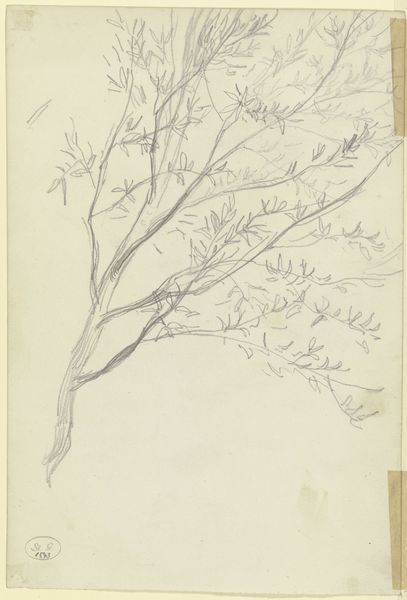
drawing, paper, pencil
#
drawing
#
paper
#
plant
#
pencil
#
naturalism
Dimensions: height 503 mm, width 331 mm
Copyright: Rijks Museum: Open Domain
Curator: What we have here is "Sketch of a Water Plant" by Gerrit Willem Dijsselhof. Created sometime between 1876 and 1924, this drawing is rendered in pencil on paper and resides right here at the Rijksmuseum. Editor: My first impression is of delicate fragility. The plant, rendered so lightly, seems to hover on the page rather than root itself. Curator: Dijsselhof's naturalist style is fascinating, especially when viewed through a modern lens. Consider the era: rapid industrialization, urbanization tearing communities asunder. His choice to meticulously render this seemingly unremarkable water plant speaks volumes about a desire to return to the simple and pure natural world, resisting the disorienting modern transformations of his time. Editor: Indeed. The composition itself is telling. Note the dominance of the plant's vertical axis. It emphasizes growth, aspiration. But look closer. The artist has carefully labelled various parts of the plant with descriptive annotations. Semiotics invite us to explore beyond the visual field and examine how meaning and artistic intent are constructed. Curator: And these notes offer another layer, drawing from cultural studies. Are they simple botanical observations, or could they represent a deeper yearning for understanding the environment at a time when humanity's relationship with nature was being dramatically reshaped by capitalism and other extractive and environmentally harmful processes? The text offers another viewpoint that cannot be separated from the historical implications of this naturalistic style of drawing. Editor: Certainly. This close relationship of observation, analysis, and composition allows the plant to take on symbolic weight. In other words, we find that what is sketched is not simply a depiction of a real-world thing but a construction that represents what is. Curator: So, through a blend of nature and intentional structure, the artist creates an intersection between identity and belonging that reflects a critical examination of place during a volatile period of global change. Editor: Yes, through analyzing the line, texture, and compositional balance, a viewer may see something as beautiful as its construction may point towards something being a marker of meaning. Curator: What I take away from this work, ultimately, is a profound sense of humanity's intertwined fate with the natural world during ecological and industrial change. Editor: Agreed. Dijsselhof's formalistic expression offers itself up in equal measure as a visual artifact worthy of philosophical thought and artistic analysis.
Comments
No comments
Be the first to comment and join the conversation on the ultimate creative platform.
